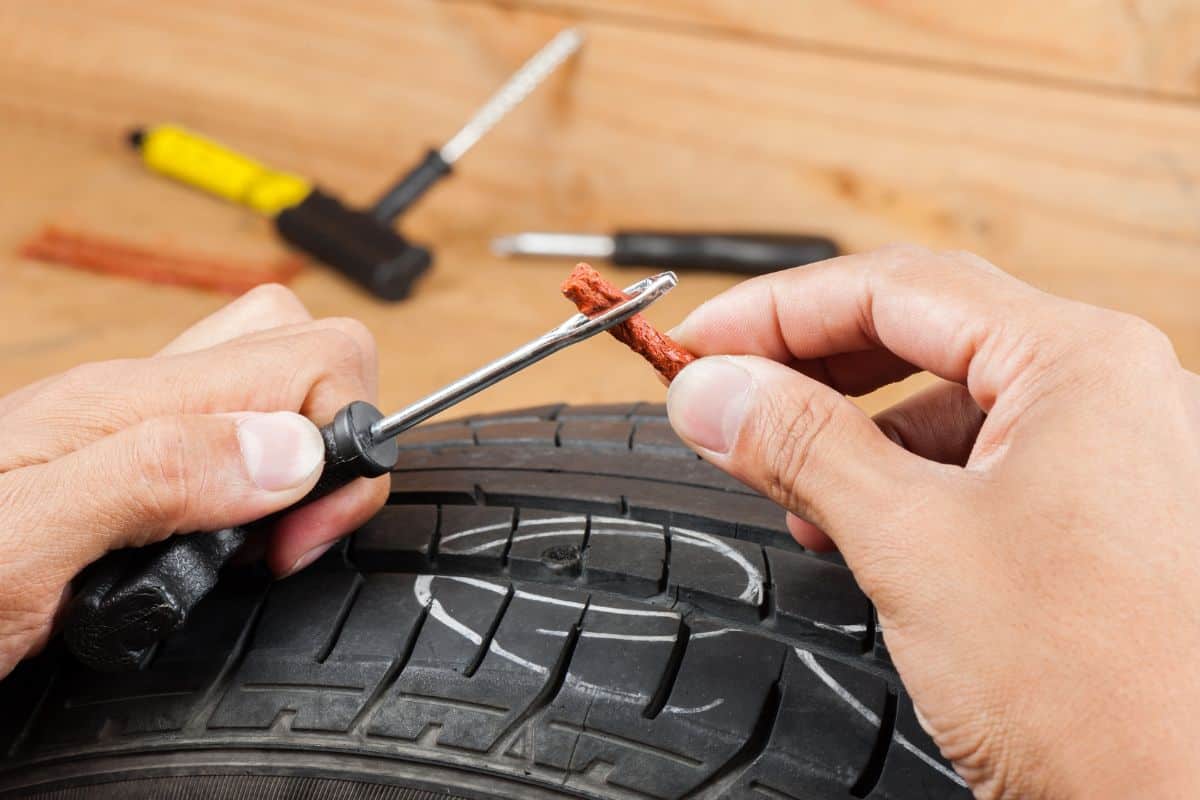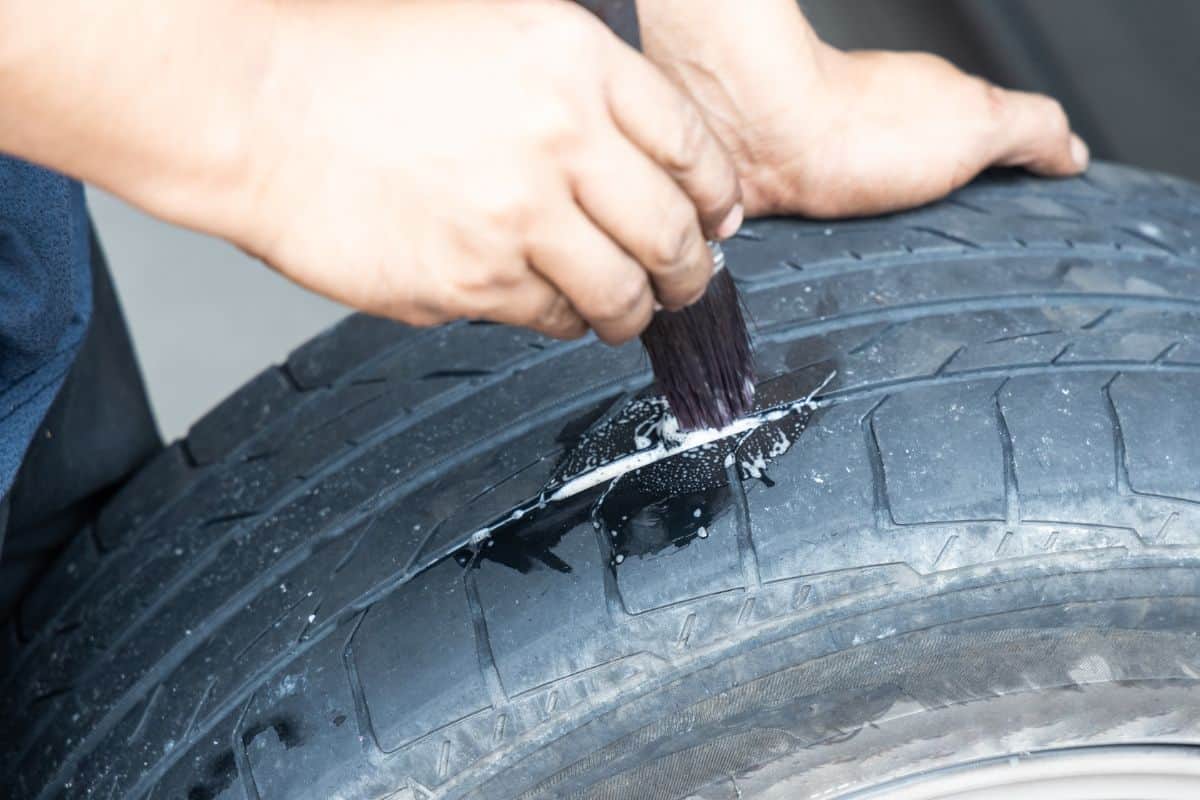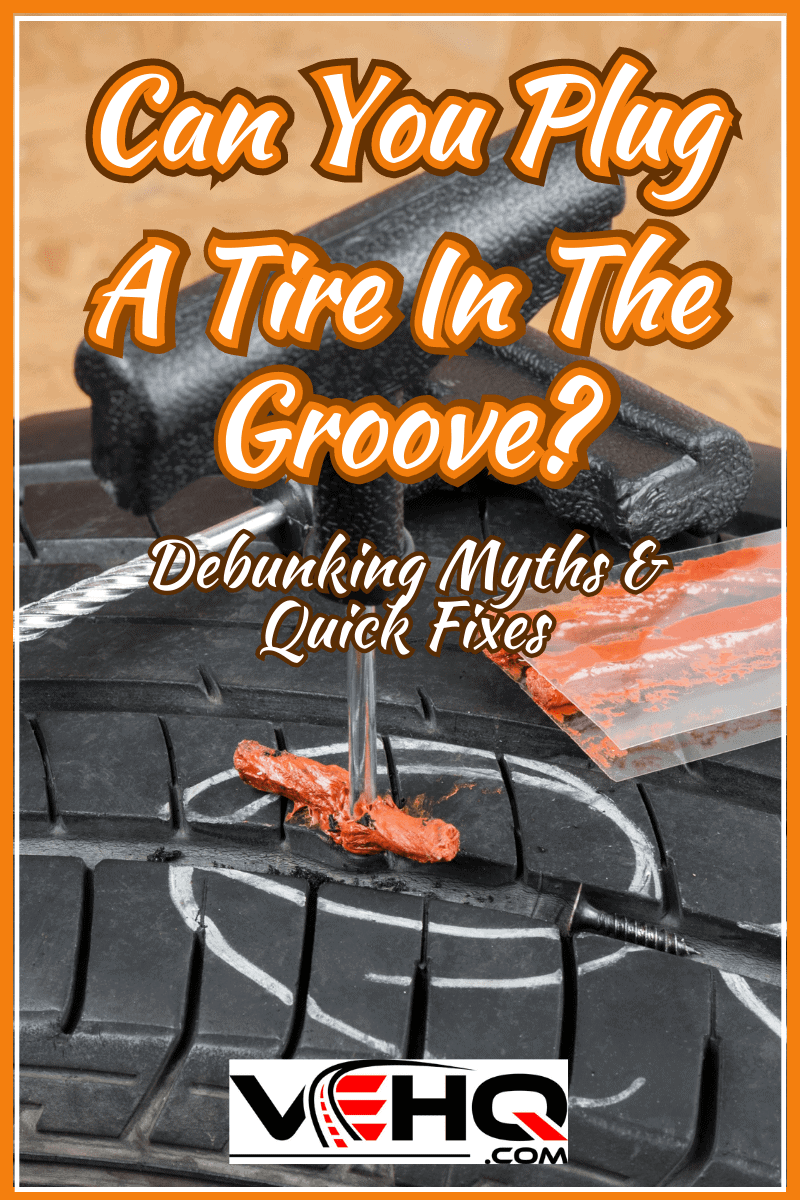Tires are a critical component of a well-functioning automobile, and dealing with a punctured tire can be quite an ordeal.
One of the questions that many drivers face is whether a tire can be plugged into the groove. While it might seem like a straightforward issue, there's more to it than meets the eye.
This article aims to provide you with a comprehensive understanding of the topic and assist you in making informed decisions about your vehicle's tires.
The grooves on a tire serve a vital purpose in ensuring proper grip on the road and shedding water to prevent hydroplaning.
When a tire gets punctured, especially within its tread grooves, it raises concerns about the effectiveness and safety of repair methods such as plugging.
Stick with us as we uncover the facts and aim to provide you with the information necessary to maintain your tires in top-notch condition. So buckle up, and let's get started!

Tire Plugging Basics

Dealing with a punctured tire can be frustrating, but knowing how to plug a tire correctly can be a real lifesaver.
Before we address the question that's on everyone's mind - "Can you plug a tire in the groove?" - let's dive into some essential tire-plugging information you should know.
Can You Plug A Tire In The Groove?
Plugging a tire in the groove might seem like a simple task, but the answer is not as straightforward as you might think.
While some professionals might be able to plug a tire in a pinch, it's generally not recommended. The primary reason is that the groove is the most critical location for the tire's structural integrity, and a plug may compromise it.
Where Should You Not Plug A Tire?
While tire plugging is an excellent method for repairing small punctures in the tread area, there are certain locations where plugging a tire is not advisable. These include:
- The sidewall: Plugging the sidewall of a tire is not recommended, as it is essential to the tire's overall stability and support.
- The shoulder: The shoulder of the tire is another area where plugging is not recommended because it can also affect the tire's structural integrity.
- In or near a previous plug or patch: Plugging a tire near an existing plug or patch can lead to weakened tire structure and eventual failure.
Does A Tire Have To Be Flat To Plug It?
You might wonder if a tire must be entirely flat before plugging it. The answer is no - you can plug a tire even if it's not completely deflated.
In fact, some experts recommend deflating the tire partially or removing the valve core to reduce resistance while plugging.
However, you should always inspect the tire thoroughly before attempting to plug it. Make sure the puncture is suitably small and located in a pluggable area. If you're unsure, consult with a tire professional to ensure your safety and the integrity of your tire.
Now that you're equipped with some essential tire-plugging knowledge, you'll be better prepared to face those pesky punctures.
Just remember to practice caution, and always consult a professional when in doubt.
Tire Plugging Limits
Have you ever wondered about the limits of tire plugging, especially when it comes to plugging a tire in the groove?
You've come to the right place!
In this section, we will explore what situations may prevent you from plugging a tire and the risks associated with tire plugging in certain areas.
When Can A Tire Not Be Plugged?
First and foremost, it's important to understand that tire plugging should be considered a temporary fix. While tire plugs can sometimes last for many miles and years, they are not meant to be a permanent solution.
When it comes to plugging a tire, there are some cases where a plug may not be recommended:
Severe damage
If a tire has sustained considerable damage such as a large puncture, sidewall damage, or damage near the bead area, a plug may not be able to provide a safe and reliable fix.
In such situations, replacing the tire is the best course of action.
Location of puncture
Plugging may not be effective if the puncture is too close to the sidewall, as this area experiences increased stress and movement.
Additionally, the bead area of the tire, where it meets the rim, should be avoided as plugging this zone could lead to potential failure during inflation or high-speed driving.
Illegally worn tires
When the tread depth of a tire has become so worn that it is below the legal limit, it is not safe to apply tire plugs. In this case, it's crucial to replace the tire to ensure your safety on the road.
Now that you are aware of situations where plugging a tire might not be possible or recommended, it's crucial to assess each case carefully and seek professional help if necessary.
Remember that the safety of you and those around you should always be prioritized above quick fixes.
So, take a close look at the puncture, its location, and other damages to determine whether plugging the tire in the groove is the best decision for your situation.
Proper Tire Plugging
Imagine this: you're cruising down the road when suddenly you notice a screw buried in the groove of your tire.
Panic sets in as you wonder if a tire plug can save the day or if you're destined for a costly replacement. Fear not, dear reader, for we're here to explore the ins and outs of plugging a tire in the groove.
What Is The Correct Way To Plug A Tire?

Plugging a tire is a quick and cost-effective solution for punctures within the tread area of a tire.
However, it's crucial to understand that plugging is not meant for sidewall damage, compression breaks, or other types of catastrophic tire damage. With that being said, let's dive into the proper technique for plugging a tire.
First things first, locate the puncture and determine if it's within the repairable area.
If the puncture is found in the tread area, you're in luck! If not, unfortunately, plugging may not be an option.
Assuming you can proceed, the first step is to remove the object that caused the puncture. Be prepared to act quickly, as air will begin to escape from the tire once the object is removed.
Next, you'll need a tire plug kit which typically includes a reaming tool, an insertion tool, and plugs. You can find a tire plug kit for around $10 to $35 depending on the quality and contents of the kit.
Start by using the reaming tool to clean and enlarge the hole in the tire. This will make it easier to insert the plug and ensure a proper seal.
With the hole prepped, thread the plug through the eye of the insertion tool, leaving equal amounts of plug material on either side of the tool.
Apply rubber cement or vulcanizing adhesive (if provided) to the plug and hole for added sealing power. Push the plug into the hole until approximately 1/4 inch of the plug remains visible.
Remove the insertion tool, and the plug should remain in place. Finally, trim any excess plug material protruding from the tire.
Once the plug is properly installed, it's essential to reinflate the tire to its recommended pressure and carefully inspect the tire for any leaks.
A soapy water solution sprayed around the plug area will help identify any leaks by causing bubbles to form if air is escaping.
Although plugging a tire in the groove is generally considered safe when done correctly, it's always best to consult with a professional tire repair technician.
This is especially in cases where the puncture is close to the edge of the tread.
Plugging Vs. Patching
Ever found yourself, or someone you know, in the unfortunate situation of having a damaged tire? You may have wondered whether to plug or patch that tire to get your vehicle back on the road quickly and safely.
We're here to help you navigate this dilemma and better understand the pros and cons of plugging and patching a tire.
Is It Better To Plug Or Patch A Tire?

Before diving into the debate, it is essential to grasp the differences between plugging and patching. A tire plug is a quick fix where an adhesive strip is inserted into the puncture of a tire to seal the hole.
On the other hand, a tire patch is a more involved process in which a piece of rubber, attached to the inner liner of the tire using an adhesive like rubber cement, is used to cover the puncture from the inside.
Choosing between a plug or patch mostly depends on the size and location of the damage. Generally, plugs are better suited for small punctures, like those caused by nails or screws, located away from the sidewall.
If your tire has an irregularly shaped hole or is damaged near the sidewall, plugging is not recommended.
Tire plugs can be a quicker and more convenient solution, often taking under 30 minutes to apply on the side of the road, even for beginners.
However, patching requires more time and effort since the tire must be removed from the wheel to apply the patch, which is typically stronger and more reliable than a plug.
Patching is further considered a more durable and safer option, especially for high-speed driving and long-term use.
Tire Plug Longevity
Imagine you're driving down the road and suddenly hit a sharp object that leaves you with a punctured tire!
You need a quick fix to get you back on the road, but how long will that tire plug last? And can you trust it to keep you safe?
Is Plugging A Tire A Permanent Fix?
Tire plugs can be a convenient temporary solution for a punctured tire, but their long-term reliability can be a concern for many drivers.
When properly installed and maintained, a tire plug can surprisingly last up to 7-10 years! However, the key to extending a tire plug's life lies in the quality of the repair and routine maintenance checks.
Although tire plugs can last for several years, it's essential to consider that they may not be a permanent fix.
In some cases, the puncture location or size may require a more comprehensive repair, such as a tire patch, or even necessitate replacing the tire altogether.
Can You Trust A Plugged Tire?
When it comes to trusting a plugged tire, the effectiveness of the repair primarily depends on the puncture location, the skill of the installer, and following proper installation guidelines.
If the puncture is within the tread of the tire and isn't too large, a plug can be a reliable fix that should hold up well under normal driving conditions.
Nonetheless, it's crucial to keep in mind that a plugged tire may not be as resilient as an undamaged one.
Regularly inspecting the repair and monitoring tire pressure can help you identify any potential issues early on and give you greater peace of mind while driving.
In conclusion, tire plugs can indeed provide a reliable and lasting fix for a punctured tire, granted that they are correctly installed and monitored.
Getting back behind the wheel with a plugged tire isn't out of the question, but remember to stay vigilant and maintain your tires to ensure a safe and smooth drive.
Check out some related articles below.


